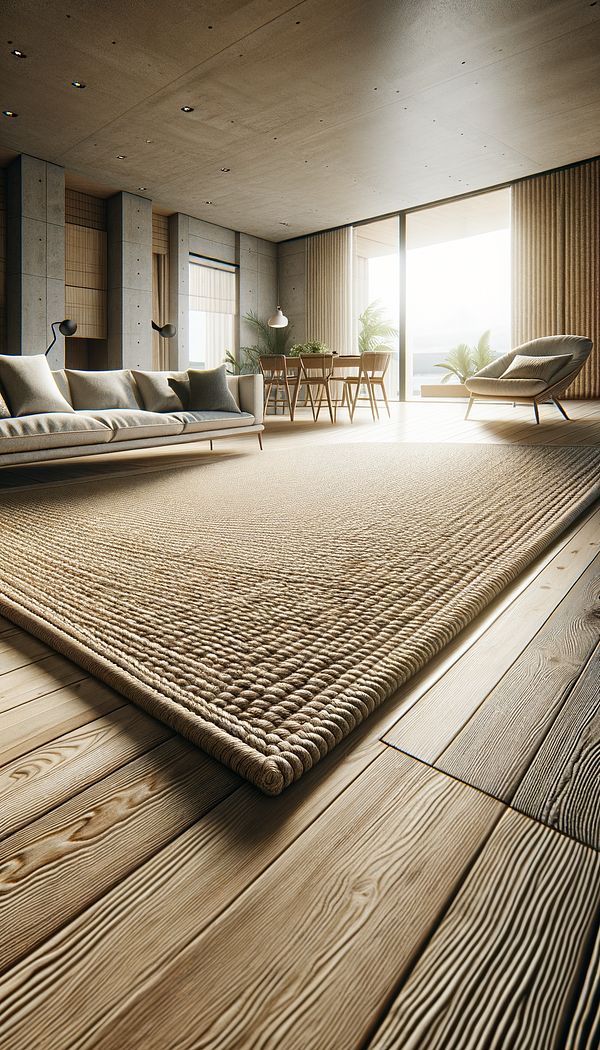What is Sisal?
Sisal is a natural fiber derived from the Agave sisalana plant, used extensively in the interior design field.
Description
Sisal, a term well-acquainted with the realms of interior design and textiles, refers to a durable and slightly coarse natural fiber extracted from the leaves of the Agave sisalana plant. Originating from regions in Mexico but now cultivated worldwide, sisal's robustness and versatility have made it a popular choice in the creation of an array of home goods, including rugs, carpets, and various types of decorative objects.
What sets sisal apart from other natural fibers is its unique combination of strength, durability, and aesthetic appeal. Its natural color ranges from a creamy white to a light brown, allowing it to blend seamlessly into a variety of interior design styles, from rustic and bohemian to more contemporary settings. Its texture also adds a touch of natural warmth and earthiness to spaces, complementing wooden elements and neutral palettes.
However, sisal is not without its limitations. While it's highly resistant to wear and tear, sisal fibers can be prone to staining if not treated properly. They're absorbent, which means that spills should be addressed quickly to prevent damage. Fortunately, many sisal products come pre-treated with stain-resistant finishes, enhancing their durability and making them more suited to high-traffic areas.
Understanding the characteristics of sisal and how it interacts with other materials and design elements is key to making the most out of its inclusion in interior spaces. Its natural aesthetics, when paired with the right design approach, can elevate the ambiance of any room, making it a favored material among interior designers and homeowners alike.
Usage
Sisal rugs are a popular application of this natural fiber, imparting durability and a rustic charm to living rooms, bedrooms, and even outdoor spaces. Additionally, sisal has found its way into the creation of wall coverings, offering a unique texture and depth to walls that conventional paints or wallpapers cannot achieve. Its application extends to smaller decorative items as well, such as baskets and placemats, further showcasing its versatility within the domain of interior design.
FAQs
-
Is sisal suitable for outdoor use?
Yes, sisal is suitable for outdoor use, especially in covered areas. However, it should be protected from direct exposure to rain and prolonged sunlight to prevent damage and fading.
-
Can sisal rugs be cleaned easily?
While sisal is inherently stain-resistant, spills should be blotted immediately to prevent staining. For general cleaning, regular vacuuming and the occasional use of a dry-cleaning powder are recommended.
-
How does sisal compare to other natural fibers?
Sisal is prized for its durability and rugged texture, making it stand out from softer natural fibers like wool or cotton. Its resistance to wear and relatively easy maintenance make it an excellent choice for high-traffic areas.
Practical Application
Considering sisal's natural beauty and texture, it makes a fantastic addition to any space seeking a touch of earthiness and rustic charm. When incorporating sisal products into your design, take into account their absorptive properties and consider placing sisal items in areas less prone to spills or in spaces where they can be easily maintained. Partnering sisal with complementing materials, such as wood, leather, or jute, can further accentuate its natural appeal, making your space more inviting and cohesive.
-
Design Styles478 articles
-
Decorative Objects240 articles
-
Materials & Textiles360 articles
-
Sustainability & Eco-Friendly Design69 articles
-
FiguringFiguring refers to the natural patterns and markings found in wood.
-
Hope ChestA hope chest is a storage chest traditionally used to collect items such as clothing and household linen, by unmarried young women in anticipation of married life.
-
SettleA settle is a traditional wooden bench with a high back and armrests.
-
CorniceA cornice is an ornamental molding that runs along the top of a wall or a building.
-
BatikBatik is a technique of wax-resist dyeing applied to whole cloth.
